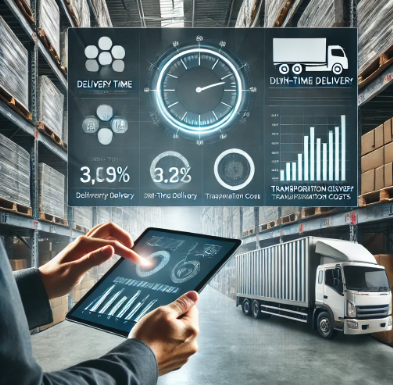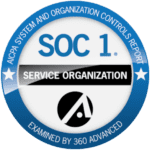Appendix:
- Introduction
- Key Metrics for Monitoring Logistics Performance
- Tools and Technology for Logistics Monitoring
- Best Practices for Reporting Logistics Performance
- Challenges in Logistics Monitoring
- Conclusion
Introduction
In today’s fast-paced supply chain environment, efficient logistics management is critical to ensuring timely deliveries, cost control, and overall customer satisfaction. Understanding how to monitor and report logistics performance is essential for companies looking to optimize their supply chain processes. In this blog, we’ll explore the key metrics, tools, and best practices for effective logistics monitoring and reporting.
Key Metrics for Monitoring Logistics Performance
Tracking the right metrics is the foundation of effective logistics monitoring. Here are some of the most important metrics you should consider:
1. Delivery Time
The time it takes for goods to reach their destination is a crucial metric. Shorter delivery times often translate to higher customer satisfaction.
2. On-Time Delivery (OTD)
This measures the percentage of deliveries made within the agreed-upon time frame. A high OTD rate reflects a reliable logistics operation.
3. Order Accuracy
Order accuracy tracks whether the correct products are delivered to the right customer. Mistakes in this area can lead to costly returns and dissatisfied customers.
4. Transportation Costs
Monitoring transportation costs is essential for understanding how efficiently logistics processes are managed. These costs include fuel, labor, and maintenance expenses.
5. Inventory Turnover
This metric measures how often inventory is sold and replaced over a certain period. A high turnover rate indicates efficient inventory management, reducing storage costs and stockouts.
| Metric | Description |
|---|---|
| Delivery Time | Measures the time from shipment to delivery |
| On-Time Delivery | Percentage of deliveries made on time |
| Order Accuracy | Tracks the percentage of correct orders |
| Transportation Costs | Total cost of transportation including fuel and labor |
| Inventory Turnover | Frequency of inventory sales and replenishment |
Tools and Technology for Logistics Monitoring
To effectively monitor logistics performance, leveraging the right tools and technology is essential. Here are some of the most commonly used technologies in logistics monitoring:
1. Transportation Management Systems (TMS)
A TMS allows companies to track shipments in real-time, optimize routes, and manage carrier relationships. Implementing a TMS can reduce transportation costs while improving delivery times.
2. Warehouse Management Systems (WMS)
WMS software helps companies track inventory in real-time, manage warehouse operations, and streamline order fulfillment processes. It plays a crucial role in monitoring inventory turnover and order accuracy.
3. IoT and Sensors
The Internet of Things (IoT) has revolutionized logistics monitoring by providing real-time data on vehicle locations, temperature-sensitive shipments, and even the condition of goods during transit. This technology enables companies to make data-driven decisions quickly.
4. Analytics Platforms
Data analytics platforms help logistics managers analyze key performance indicators (KPIs) and generate reports. Advanced analytics can provide insights into where inefficiencies exist and how to optimize logistics operations.
Best Practices for Reporting Logistics Performance
Accurate and timely reporting is essential for decision-making in logistics management. Here are some best practices for reporting logistics performance:
1. Tailor Reports to Your Audience
Logistics performance reports should be tailored to different stakeholders. For example, a detailed report with KPIs might be necessary for operations managers, while a high-level summary is more appropriate for senior executives.
2. Focus on Actionable Insights
Reports should not just present raw data but should highlight actionable insights. This might include identifying areas where transportation costs can be reduced or where delivery times can be improved.
3. Use Visualizations
Data visualizations like charts, graphs, and dashboards make it easier to interpret complex logistics data. Visual reports allow stakeholders to quickly grasp trends and make informed decisions.
4. Automate Reporting Processes
By automating the collection and reporting of logistics data using a logistics monitoring system, companies can ensure timely and accurate reporting without the need for manual data entry.
Challenges in Logistics Monitoring
While there are numerous tools and technologies available for logistics monitoring, there are also challenges that companies must overcome:
1. Data Accuracy
Inaccurate or incomplete data can lead to incorrect conclusions and ineffective decision-making. Ensuring that all data sources are integrated and regularly updated is crucial for accurate monitoring.
2. Real-Time Visibility
Gaining real-time visibility into shipments and inventory can be challenging, especially for companies that rely on multiple carriers or third-party logistics providers. Implementing IoT solutions and cloud-based platforms can improve real-time tracking.
3. Scalability
As companies grow, their logistics operations become more complex. Scaling logistics monitoring systems to accommodate larger volumes of data and more shipments requires careful planning and investment in technology.
4. Data Overload
Too much data can be overwhelming for logistics managers. It’s important to focus on the most relevant KPIs and use analytics tools to filter and prioritize information.
Conclusion
Understanding how to monitor and report logistics performance is critical for optimizing supply chain operations and ensuring customer satisfaction. By focusing on the right metrics, leveraging advanced tools like TMS and WMS, and adhering to best practices in reporting, companies can improve their logistics performance and make data-driven decisions. However, overcoming challenges such as data accuracy and scalability requires careful planning and the right technology partners.
For more information on how logistics monitoring can help your business, reach out to experts who can guide you through the process and provide the tools you need to succeed.




